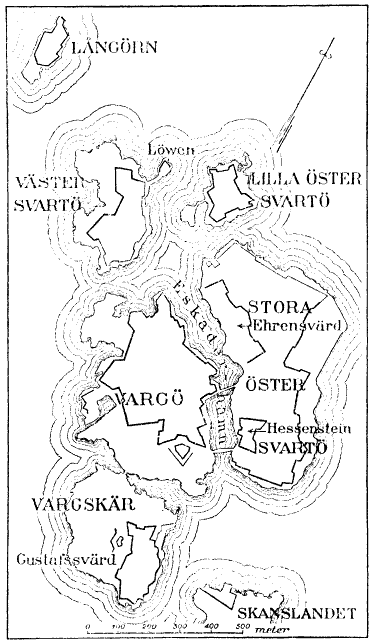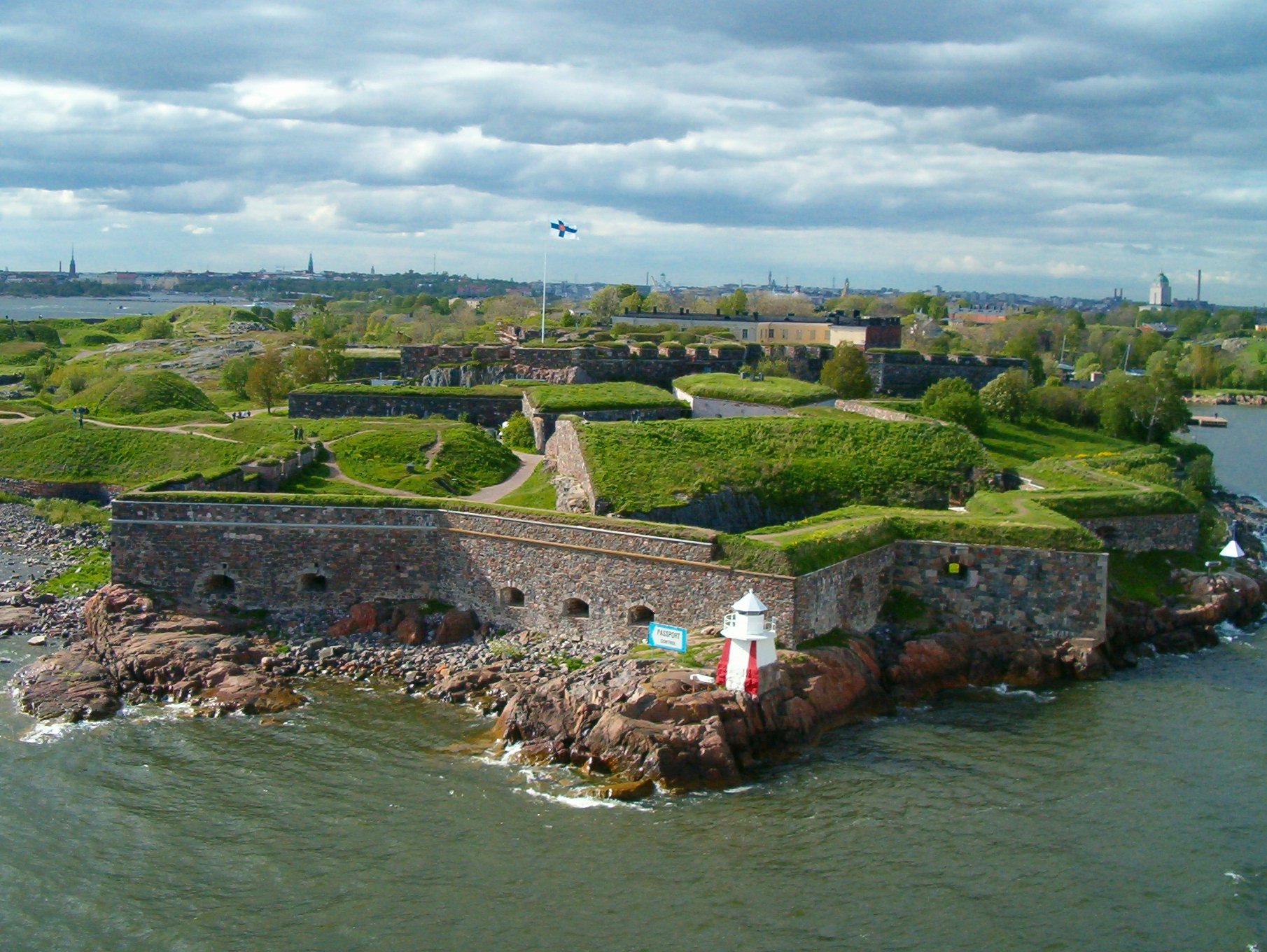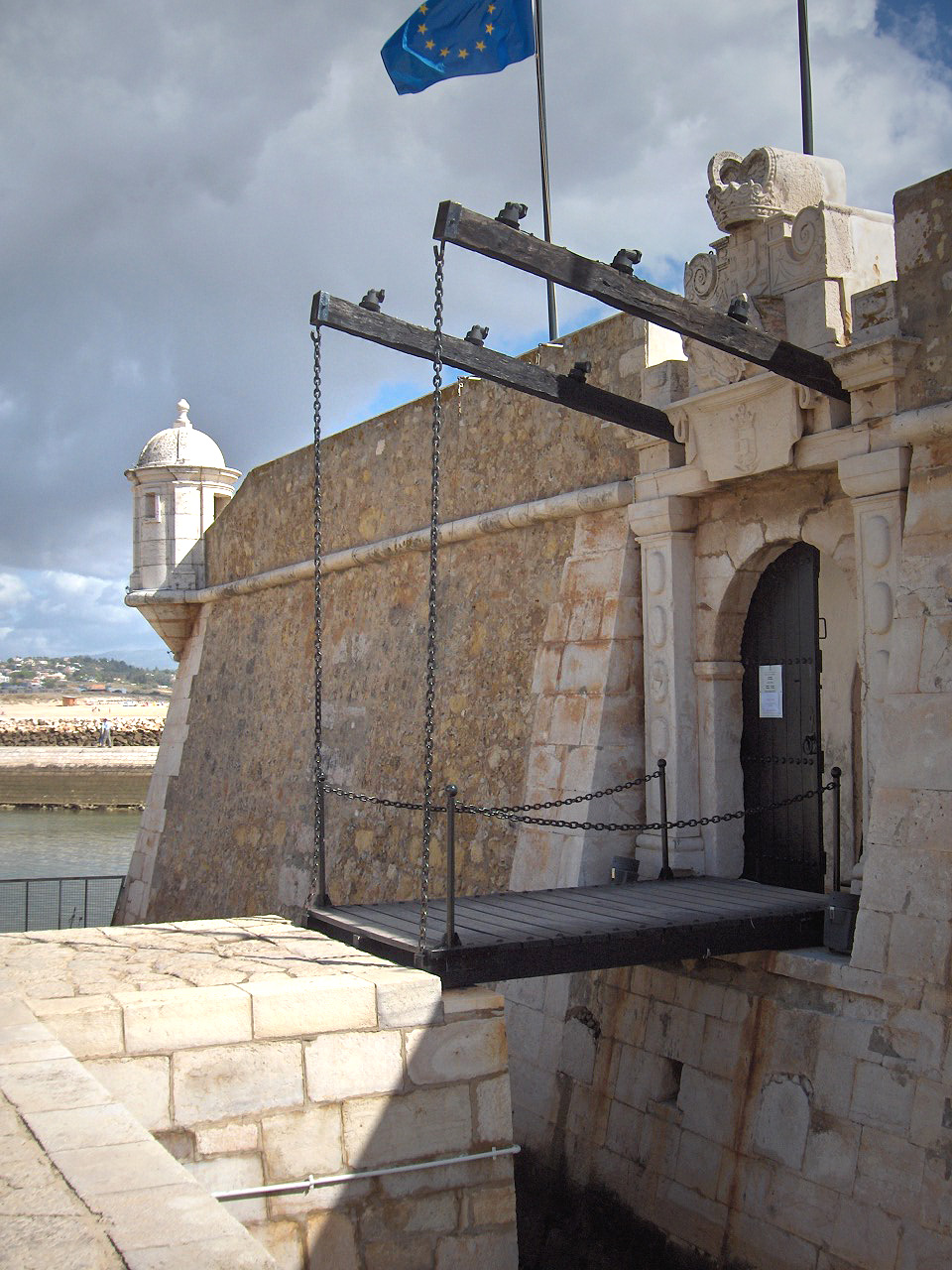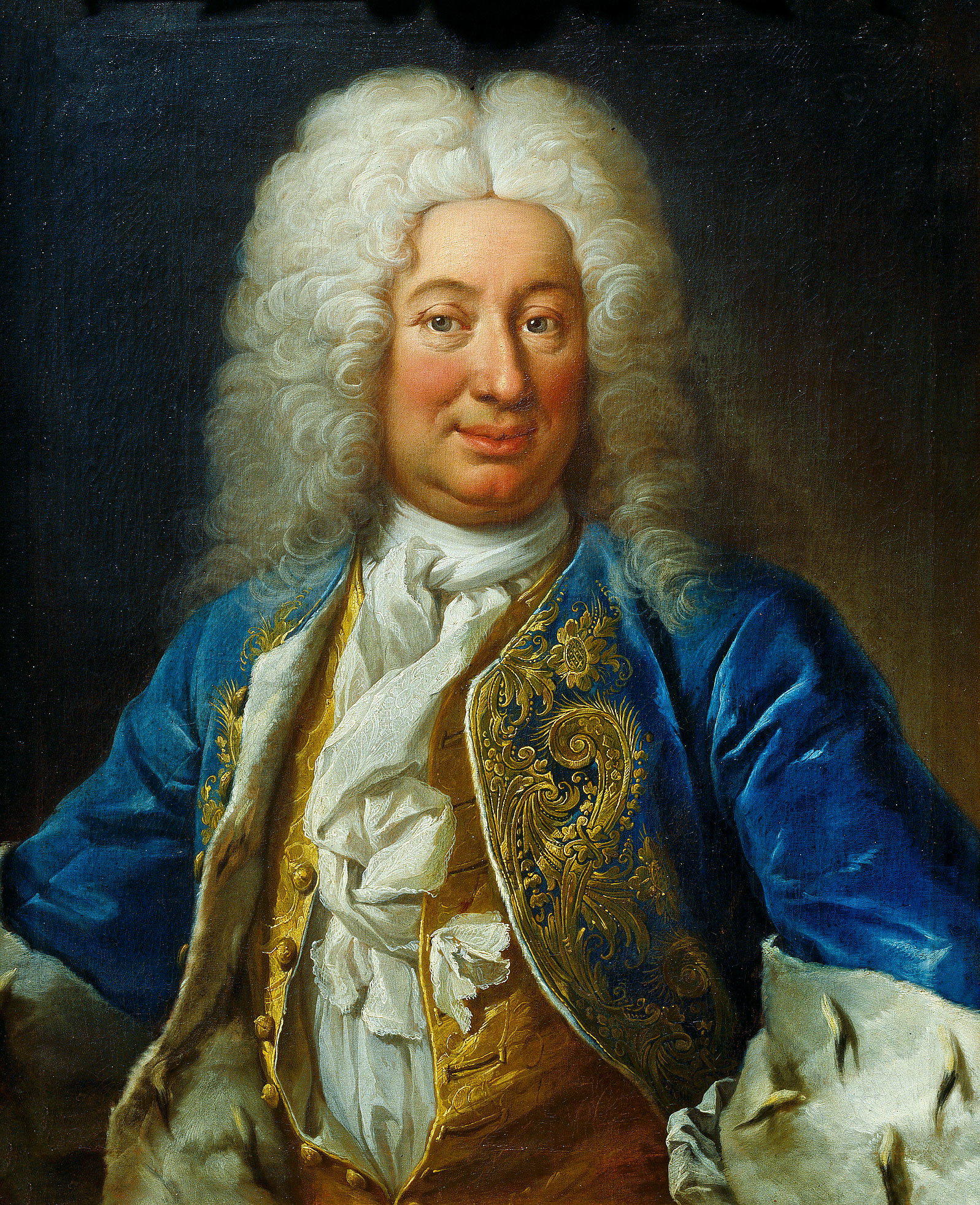|
Kuninkaanportti
Kuninkaanportti or Kungsporten ( Finnish and Swedish respectively for "the king's gate") is the principal entrance to the fortress Suomenlinna (Swedish: ''Sveaborg'') outside Helsinki. It is on the southernmost island of Suomenlinna, in front of the Kustaanmiekka strait, and is considered the main symbol of Suomenlinna. The gate was constructed from 1753 to 1754 at the place where King Adolf Frederick of Sweden anchored his ship when he was coming to inspect the construction of the fortress. The name "the king's gate" comes from this. The gate is a typical fortress gate with cannon openings. There are wide stairs leading to the gate, but in front of the gate is a drawbridge and a wide pit at both sides, to hinder climbing into the fortress. The gate was featured in the 1000 Finnish mark note in the last series, from 1986 to 2001. As a decoration, the sides of the gate feature four stone tablets which were written by the designer of the fortress, Augustin Ehrensvärd, in Swedis ... [...More Info...] [...Related Items...] OR: [Wikipedia] [Google] [Baidu] |
Helsinki
Helsinki ( or ; ; sv, Helsingfors, ) is the Capital city, capital, primate city, primate, and List of cities and towns in Finland, most populous city of Finland. Located on the shore of the Gulf of Finland, it is the seat of the region of Uusimaa in southern Finland, and has a population of . The Helsinki urban area, city's urban area has a population of , making it by far the List of urban areas in Finland by population, most populous urban area in Finland as well as the country's most important center for politics, education, finance, culture, and research; while Tampere in the Pirkanmaa region, located to the north from Helsinki, is the second largest urban area in Finland. Helsinki is located north of Tallinn, Estonia, east of Stockholm, Sweden, and west of Saint Petersburg, Russia. It has History of Helsinki, close historical ties with these three cities. Together with the cities of Espoo, Vantaa, and Kauniainen (and surrounding commuter towns, including the eastern ... [...More Info...] [...Related Items...] OR: [Wikipedia] [Google] [Baidu] |
Suomenlinna
Suomenlinna (; until 1918 Viapori, ), or Sveaborg (), is an inhabited sea fortress the Suomenlinna district is on eight islands of which six have been fortified; it is about 4 km southeast of the city center of Helsinki, the capital of Finland. Suomenlinna is popular with tourists and locals who enjoy it as a picturesque picnic site. Originally named ''Sveaborg'' (Castle of the Swedes), or ''Viapori'' as referred to by Finnish-speaking Finns, it was renamed in Finnish to ''Suomenlinna'' (Castle of Finland) in 1918 for patriotic and nationalistic reasons, though it is still known by its original name in Sweden and by Swedish-speaking Finns. The Swedish crown commenced the construction of the fortress in 1748 as protection against Russian expansionism. The general responsibility for the fortification work was given to Augustin Ehrensvärd. The original plan of the bastion fortress was strongly influenced by the ideas of Vauban, the foremost military engineer of the time, ... [...More Info...] [...Related Items...] OR: [Wikipedia] [Google] [Baidu] |
Kustaanmiekka
Suomenlinna (; until 1918 Viapori, ), or Sveaborg (), is an inhabited sea fortress the Suomenlinna district is on eight islands of which six have been fortified; it is about 4 km southeast of the city center of Helsinki, the capital of Finland. Suomenlinna is popular with tourists and locals who enjoy it as a picturesque picnic site. Originally named ''Sveaborg'' (Castle of the Swedes), or ''Viapori'' as referred to by Finnish-speaking Finns, it was renamed in Finnish to ''Suomenlinna'' (Castle of Finland) in 1918 for patriotic and nationalistic reasons, though it is still known by its original name in Sweden and by Swedish-speaking Finns. The Swedish crown commenced the construction of the fortress in 1748 as protection against Russian expansionism. The general responsibility for the fortification work was given to Augustin Ehrensvärd. The original plan of the bastion fortress was strongly influenced by the ideas of Vauban, the foremost military engineer of the time, an ... [...More Info...] [...Related Items...] OR: [Wikipedia] [Google] [Baidu] |
Finnish Mark
The markka ( fi, markka; sv, mark; sign: Mk; ISO code: FIM, typically known outside Finland as the Finnish mark) was the currency of Finland from 1860 until 28 February 2002, when it ceased to be legal tender. The mark was divided into 100 pennies ( fi, penni; sv, penni), abbreviated as "p". At the point of conversion, the rate was fixed at €1 = Mk 5.94573. The mark was replaced by the euro (€), which had been introduced, in cash form, on 1 January 2002. This was after a transitional period of three years, when the euro was the official currency but only existed as "book money" outside of the monetary base. The dual circulation period, when both the Finnish mark and the euro had legal tender status, ended on 28 February 2002. Etymology The name "markka" was based on a medieval unit of weight. Both "markka" and "penni" are similar to words used in Germany for that country's former currency, based on the same etymological roots as the Deutsche Mark and pfennig. ... [...More Info...] [...Related Items...] OR: [Wikipedia] [Google] [Baidu] |
Suomenlinna Inscription 2
Suomenlinna (; until 1918 Viapori, ), or Sveaborg (), is an inhabited sea fortress the Suomenlinna district is on eight islands of which six have been fortified; it is about 4 km southeast of the city center of Helsinki, the capital of Finland. Suomenlinna is popular with tourists and locals who enjoy it as a picturesque picnic site. Originally named ''Sveaborg'' (Castle of the Swedes), or ''Viapori'' as referred to by Finnish-speaking Finns, it was renamed in Finnish to ''Suomenlinna'' (Castle of Finland) in 1918 for patriotic and nationalistic reasons, though it is still known by its original name in Sweden and by Swedish-speaking Finns. The Swedish crown commenced the construction of the fortress in 1748 as protection against Russian expansionism. The general responsibility for the fortification work was given to Augustin Ehrensvärd. The original plan of the bastion fortress was strongly influenced by the ideas of Vauban, the foremost military engineer of the time, an ... [...More Info...] [...Related Items...] OR: [Wikipedia] [Google] [Baidu] |
Finnish Language
Finnish (endonym: or ) is a Uralic language of the Finnic branch, spoken by the majority of the population in Finland and by ethnic Finns outside of Finland. Finnish is one of the two official languages of Finland (the other being Swedish). In Sweden, both Finnish and Meänkieli (which has significant mutual intelligibility with Finnish) are official minority languages. The Kven language, which like Meänkieli is mutually intelligible with Finnish, is spoken in the Norwegian county Troms og Finnmark by a minority group of Finnish descent. Finnish is typologically agglutinative and uses almost exclusively suffixal affixation. Nouns, adjectives, pronouns, numerals and verbs are inflected depending on their role in the sentence. Sentences are normally formed with subject–verb–object word order, although the extensive use of inflection allows them to be ordered differently. Word order variations are often reserved for differences in information structure. ... [...More Info...] [...Related Items...] OR: [Wikipedia] [Google] [Baidu] |
Swedish Language
Swedish ( ) is a North Germanic language spoken predominantly in Sweden and in parts of Finland. It has at least 10 million native speakers, the fourth most spoken Germanic language and the first among any other of its type in the Nordic countries overall. Swedish, like the other Nordic languages, is a descendant of Old Norse, the common language of the Germanic peoples living in Scandinavia during the Viking Era. It is largely mutually intelligible with Norwegian and Danish, although the degree of mutual intelligibility is largely dependent on the dialect and accent of the speaker. Written Norwegian and Danish are usually more easily understood by Swedish speakers than the spoken languages, due to the differences in tone, accent, and intonation. Standard Swedish, spoken by most Swedes, is the national language that evolved from the Central Swedish dialects in the 19th century and was well established by the beginning of the 20th century. While distinct regional v ... [...More Info...] [...Related Items...] OR: [Wikipedia] [Google] [Baidu] |
Adolf Frederick Of Sweden
Adolf Frederick, or Adolph Frederick ( sv, Adolf Fredrik, german: Adolf Friedrich; 14 May 171012 February 1771) was King of Sweden from 1751 until his death. He was the son of Christian August of Holstein-Gottorp, Prince of Eutin, and Albertina Frederica of Baden-Durlach. He was an uncle of Catherine the Great The first king from the House of Holstein-Gottorp, Adolf Frederick was a weak monarch, installed as first in line to the throne following the parliamentary government's failure to reconquer the Baltic provinces in 1741–43. Aside from a few attempts, supported by pro- absolutist factions among the nobility, to reclaim the absolute monarchy held by previous monarchs, he remained a mere constitutional figurehead until his death. His reign saw an extended period of internal peace. However, the finances stagnated following failed mercantilist doctrines pursued by the Hat administration. The Hat administration ended during the 1765–66 parliament, where the Cap oppositi ... [...More Info...] [...Related Items...] OR: [Wikipedia] [Google] [Baidu] |
Drawbridge
A drawbridge or draw-bridge is a type of moveable bridge typically at the entrance to a castle or tower surrounded by a moat. In some forms of English, including American English, the word ''drawbridge'' commonly refers to all types of moveable bridges, such as bascule bridges, vertical-lift bridges and swing bridges, but this article concerns the narrower historical definition of the term where the bridge is used in a defensive structure. As used in castles or defensive structures, drawbridges provide access across defensive structures when lowered, but can quickly be raised from within to deny entry to an enemy force. Castle drawbridges Medieval castles were usually defended by a ditch or moat, crossed by a wooden bridge. In early castles the bridge might be designed to be destroyed or removed in the event of an attack, but drawbridges became very common. A typical arrangement would have the drawbridge immediately outside a gatehouse, consisting of a wooden deck with one ... [...More Info...] [...Related Items...] OR: [Wikipedia] [Google] [Baidu] |
Augustin Ehrensvärd
Field Marshal count Augustin Ehrensvärd (25 September 1710 – 4 October 1772) was a Swedish military officer, military architect, artist, creator of the Suomenlinna (Sveaborg) fortress, Svartholm fortress and the Swedish archipelago fleet. He was born in Fullerö Castle, Barkarö and died in the village of Saris, Mynämäki. In 1747, he was chosen by king Frederick I of Sweden to design and construct a maritime fortress near Helsinki in Finland, then a part of the Kingdom of Sweden. Building the fortress of Sveaborg became a life's work for Ehrensvärd, who kept expanding the island fortress until his death in 1772. Ehrensvärd's design was a low-profile bastion-type fortress that would follow the natural contours of the islands and thus remain inconspicuous to enemy fleets. Many of the constructions in Sveaborg are considered to be architectural masterpieces. Augustin Ehrensvärd was also the commander of the Swedish archipelago fleet from 1756 to 1766, and from 1770, unti ... [...More Info...] [...Related Items...] OR: [Wikipedia] [Google] [Baidu] |
Frederick I Of Sweden
Frederick I ( sv, Fredrik I; 28 April 1676 – 5 April 1751) was prince consort of Sweden from 1718 to 1720, and King of Sweden from 1720 until his death and (as ''Frederick I'') also Landgrave of Hesse-Kassel from 1730. He ascended the throne following the death of his brother-in-law absolutist Charles XII in the Great Northern War, and the abdication of his wife, Charles's sister and successor Ulrika Eleonora, after she had to relinquish most powers to the Riksdag of the Estates and thus chose to abdicate. His powerless reign and lack of legitimate heirs of his own saw his family's elimination from the line of succession after the parliamentary government dominated by pro- revanchist Hat Party politicians ventured into a war with Russia, which ended in defeat and the Russian tsarina Elizabeth getting Adolf Frederick of Holstein-Gottorp instated following the death of the king. He is known as Frederick I despite being the only Swedish king of that name. Youth He was ... [...More Info...] [...Related Items...] OR: [Wikipedia] [Google] [Baidu] |






